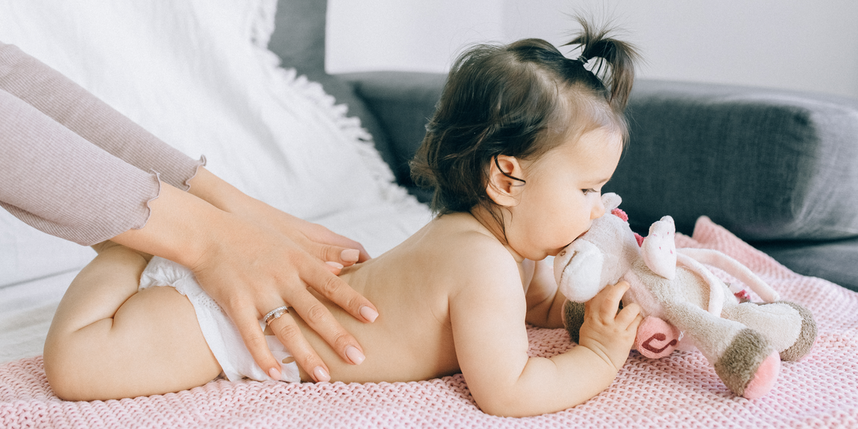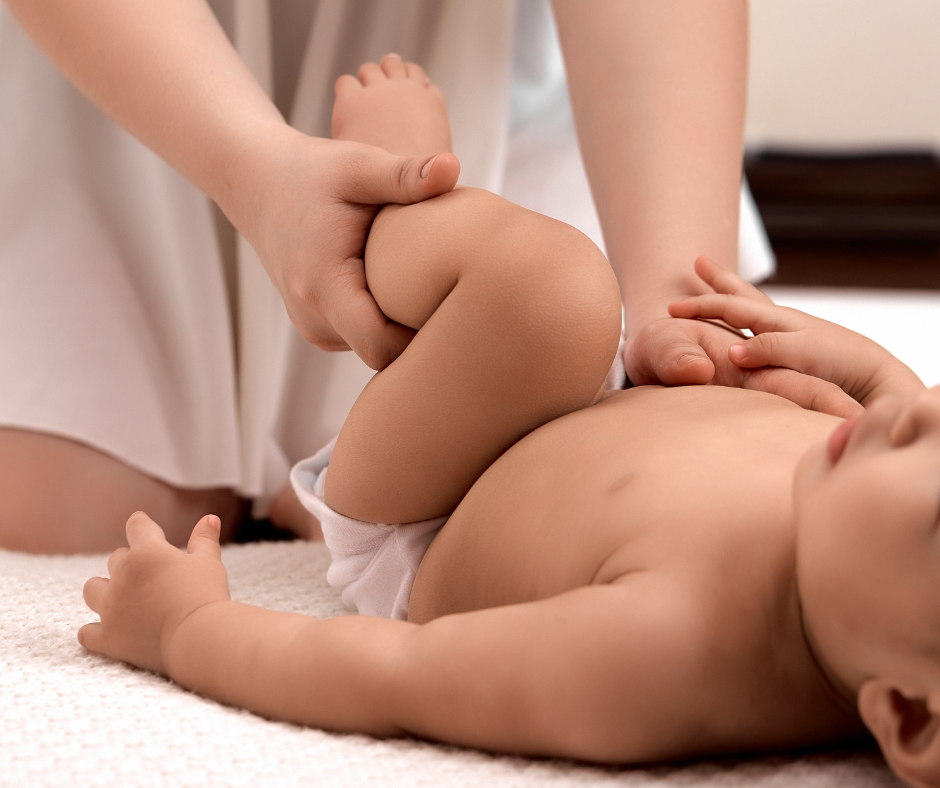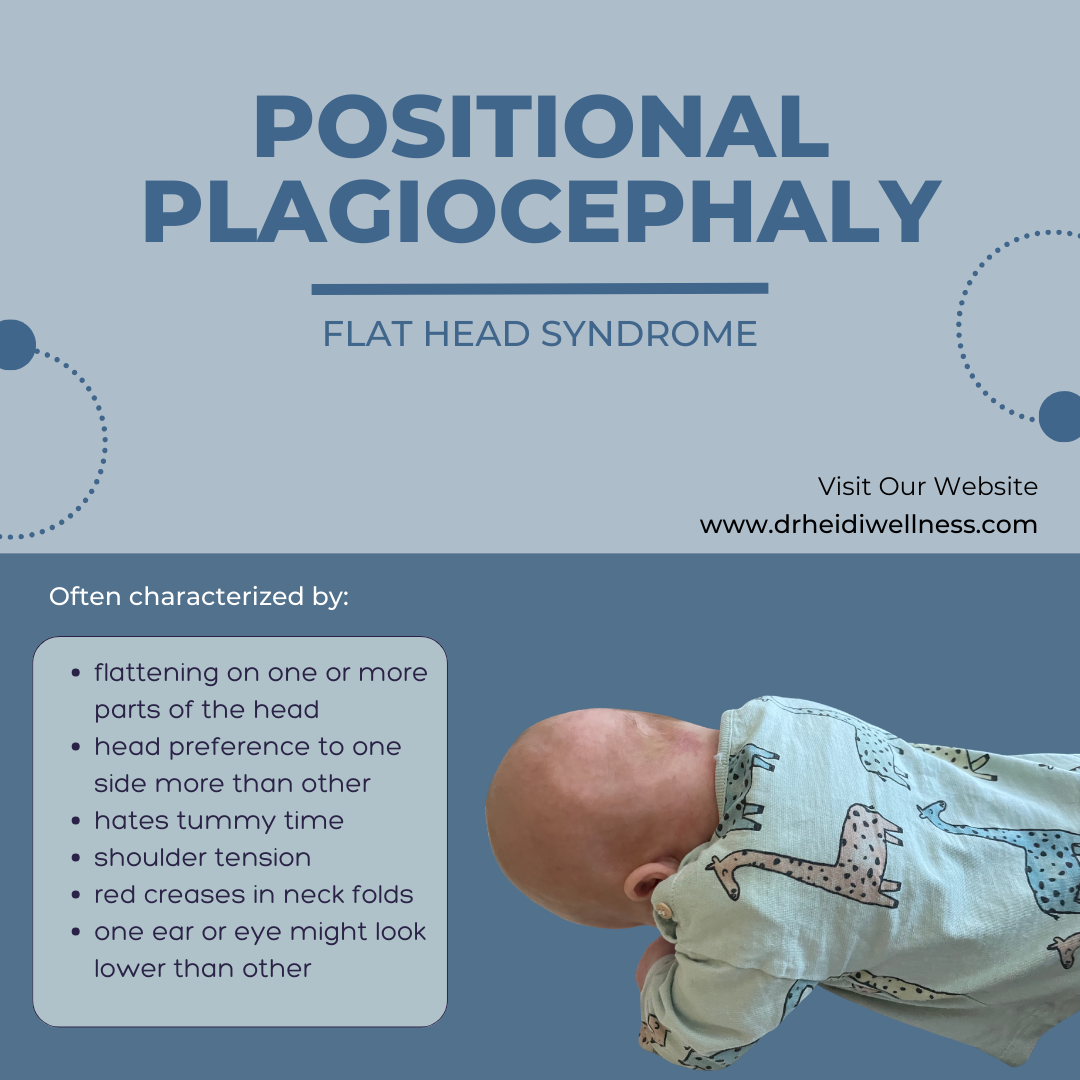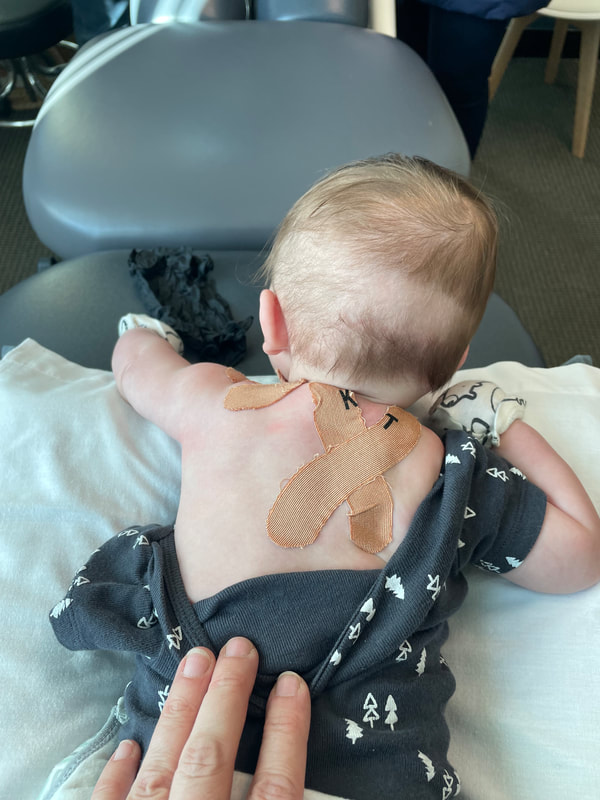 Your sweet little bundle is really starting to show off now that they have moved from the newborn stage to the infant stage. They should be smiling and giggling, watching you move about the room, practicing rolling, hanging out in tummy time, exploring their surroundings by putting everything in their mouth and working to sit up with alot of support.  You might feel some resistance in one hip as you change a diaper. Or notice one shoulder/arm is harder to push into their shirt. When you bring your baby in for an evaluation part of what we are looking at is comparing movement on their right to left side. Does their head tilt or turn one way more often than the other and now the baby has a flat spot? We can easily see this and work together to remove the structural challenges. This is the age you will start to really see flattening of the skull. Flat head syndrome is clinically referred to as Plagiocephaly or positional plagiocephay if it is one sided or Brachiocephaly if the back of the head is flattened. Since it is suggested that infants be placed to sleep on their back there is a much higher proportion of infants with flat heads nowadays. Plus infants ride in car seats, rest in swings and bounce seats or are often placed on the floor to play on their back furthering the opportunity for head flattening. The infant skull is very soft so is affected by pressure. Premature babies will most likely always be affected by this.as will alot of multiples. Twins are "womb mates" and have continuous pressure on their developing skull so might be born with an obvious flattening to their skull.
0 Comments
Leave a Reply. |
Hi, I'm Dr. Heidi!A mom of 3, pediatric chiropractor, natural remedy guru and wellness educator. Archives
April 2024
Follow along on instagram |


